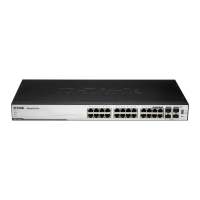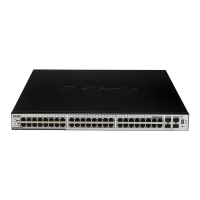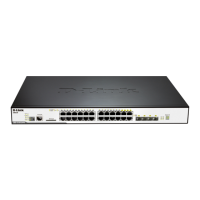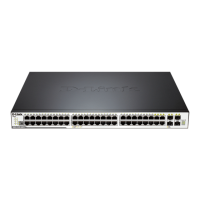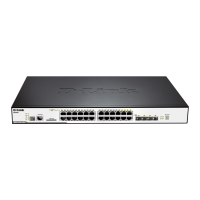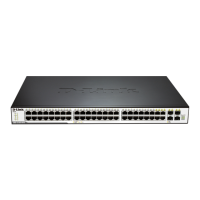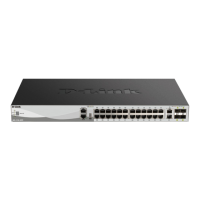DGS-3100 Series Gigabit Stackable Managed Switch CLI Manual
2
USING THE CONSOLE CLI
The Switch supports a console management interface that allows the user to connect to the Switch’s
management agent via a serial port and a terminal or a computer running a terminal emulation program.
The console can also be used over the network using the TCP/IP Telnet protocol. The console program
can be used to configure the Switch to use a SNMP-based network management software over the
network.
This chapter describes how to use the console interface to access the Switch, change its settings, and
monitor its operation.
NOTE: Switch configuration settings are saved to non-volatile RAM using the save command.
The current configuration will then be retained in the Switch’s NV-RAM, and reloaded when the
Switch is rebooted. If the Switch is rebooted without using the save command, the last
configuration saved to NV-RAM is loaded.
Connecting to the Switch
The console interface is used by connecting the Switch to a VT100-compatible terminal or a computer
running an ordinary terminal emulator program (for example, the HyperTerminal program included with
the Windows operating system) using an RS-232C serial cable. Your terminal parameters will need to be
set to:
• VT-100 compatible
• 9600 bps
• 8 data bits
• No parity
• One stop bit
• No flow control
The same functions may also be accessed over a Telnet interface. Once an IP address for the Switch has
been set, A Telnet program can be used (in VT-100 compatible terminal mode) to access and control the
Switch. All of the screens are identical, whether accessed from the console port or from a Telnet
interface.
After the Switch reboots and you have to logged in, the console looks like this:
4

